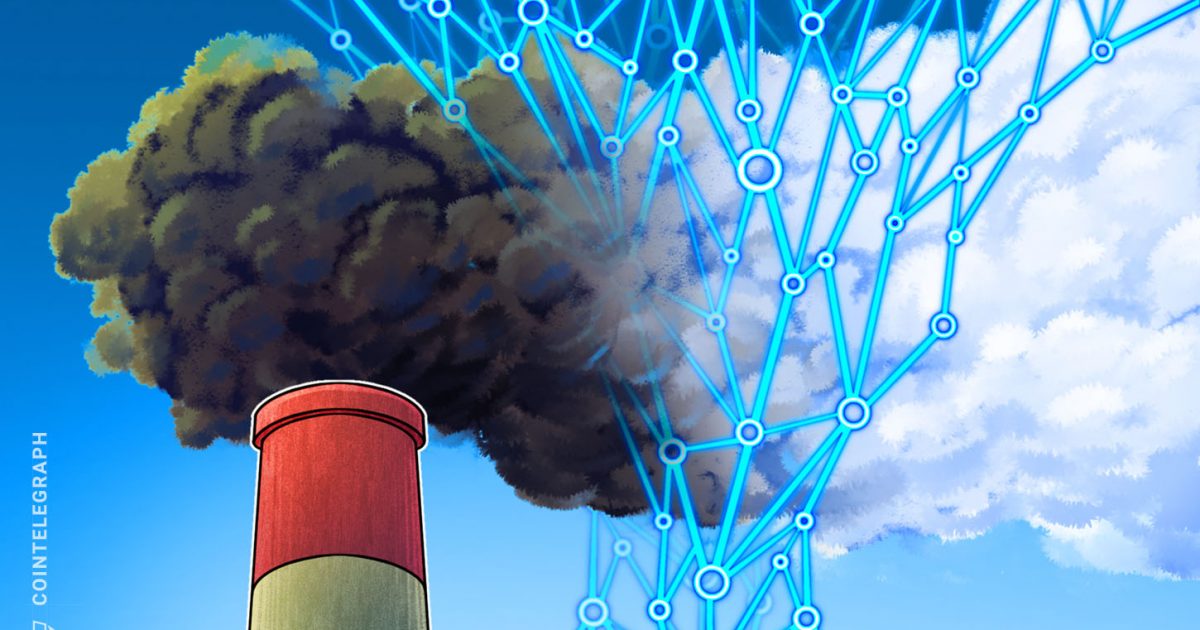Blockchain for supply chain management is one of the most practical business applications for large, multi-party sectors seeking trust and transparency across daily operations. As such, the mining and metals sector has now started to leverage blockchain technology to effectively track carbon emissions across complex, global supply chains.
This month, the World Economic Forum launched a proof-of-concept to trace carbon emissions across the supply chains of seven mining and metals firms. Known as the Mining and Metals Blockchain Initiative, or MMBI, this is a collaboration between the WEF and industry companies including Anglo American, Antofagasta Minerals, Eurasian Resources Group, Glencore, Klöckner & Co., Minsur, and Tata Steel.
Jörgen Sandström, head of the WEF’s Mining and Metals Industry, told Cryptox that the distributed nature of blockchain technology makes it the perfect solution for companies within the sector looking to trace carbon emissions:
“Forward-thinking organizations in the mining and metals space are starting to understand the disruptive potential of blockchain to solve pain points, while also recognizing that the industry-wide collaboration around blockchain is necessary.”
According to Sandström, many blockchain projects intended to support responsible sourcing have been bilateral, resulting in a fractured system. However, this new initiative from the WEF is driven entirely by the mining and metals industry and aims to demonstrate blockchain’s full potential to track carbon emissions across the entire value chain.
While vast, the current proof-of-concept is focused on tracing carbon emissions in the copper value chain, Sandström shared. He also explained that a private blockchain network powered by Dutch blockchain development company Kryha is being leveraged to track greenhouse gas emissions from the mine to the smelter and all the way to the original equipment manufacturer. Sandström mentioned that the platform’s vision is to create a carbon emissions blueprint for all essential metals, demonstrating mine-to-market-and-back via recycling.
To put things in perspective, according to a recent report from McKinsey & Company, mining is currently responsible for 4% to 7% of greenhouse gas emissions globally. The document states that Scope 1 and Scope 2 CO2 emissions from the sector (those incurred through mining operations and power consumption) amount to 1%, while fugitive-methane emissions from coal mining are estimated at 3% to 6%. Additionally, 28% of global emissions is considered Scope 3, or indirect emissions, including the combustion of coal.
Unfortunately, the mining industry has been slow to meet emission-reduction goals. The document notes that current targets published by mining companies range from 0% to 30% by 2030 — well below the goals laid out in the Paris Agreement. Moreover, the COVID-19 crisis has exacerbated the sector’s unwillingness to change. A blog post from Big Four firm Ernest & Young shows that decarbonization and a green agenda will be one of the biggest business opportunities for mining and metals companies in 2021, as these have become prominent issues in the wake of the pandemic. Sandström added:
“The industry needs to respond to the increasing demands of minerals and materials while responding to increasing demands by consumers, shareholders and regulators for a higher degree of sustainability and traceability of the products.”
Why blockchain?
While it’s clear that the mining and metals industry needs to reduce carbon emissions to meet sustainability standards and other goals, blockchain is arguably a solution that can deliver just that in comparison to other technologies.
This concept was outlined in detail in an NS Energy op-ed written by Joan Collell, a business strategy leader and the chief commercial officer at FlexiDAO, an energy technology software provider. He explained that Scope 1, 2 and 3 emission supply chains must all be measured accurately, requiring a high level of integration and coordination between multiple supply chain networks. He added:
“Different entities have to share the necessary data for the sustainability certification of products and to guarantee their traceability. This is an essential step, since everything that can be quantified is no longer a risk, but it becomes a management problem.”
According to Collel, data sharing has two main purposes: to provide transparency and traceability. Meanwhile, the main feature of a blockchain network is to provide transparency and traceability across multiple participants. On this, Collel noted: “The distributed ledger of blockchain can register in real time the consumption data of different entities across different locations and calculate the carbon intensity of that consumption.”
Collel also noted that a digital certificate outlining the amount of energy transferred can then be produced, showing exactly where and when emissions were produced. Ultimately, blockchain can provide trust, traceability and auditability across mining and metals supply chains, thus helping reduce carbon emissions.
Data challenges may hamper productivity
While blockchain may appear as the ideal solution for tracing carbon emissions across mining and metals supply chains, data challenges must be taken into consideration.
Sal Ternullo, co-lead for U.S. Cryptoasset Services at KPMG, told Cryptox that capturing data cryptographically across the entire value chain will indeed transform the ability to accurately measure the carbon intensity of different metals. “It’s all about the accuracy of source, the resulting data and the intrinsic value that can be verified end to end,” he said. However, Ternullo pointed out that data capture and validation are the hardest parts of this equation:
“Where, when, how (source-cadence-process) are issues that organizations are still grappling with. There are a number of blockchain protocols and solutions that can be configured to meet this use case but the challenge of data capture and validation is often not considered to the extent that it should be.”
According to Ternullo, the sector’s lack of clear standards on how emissions should be tracked further compounds these challenges. He mentioned that while some organizations have doubled down on the Sustainability Accounting Standards Board’s capture and reporting standard, there are several other standards that must be evaluated before an organization can proceed with automation, technology and analytical components that would make these processes transparent to both shareholders and consumers.
To his point, Sandström mentioned that the current proof-of-concept focused on tracing carbon emissions in the copper value chain demonstrates that participants can collaborate and test practical solutions to sustainability issues that cannot be resolved by individual companies. At the same time, Sandström stated that the WEF is sensitive to how data is treated and shared: “Having an industry approach enables us to focus on practical and finding viable ways to deliver on our vision.”
An industry approach is also helpful, with Ternullo explaining that an organization’s operating models for culture and technology must be aligned to ensure success. This is the case with all enterprise blockchain projects that require data sharing and new ways of collaboration, which may very well be easier to overcome when performed from an industry perspective.




